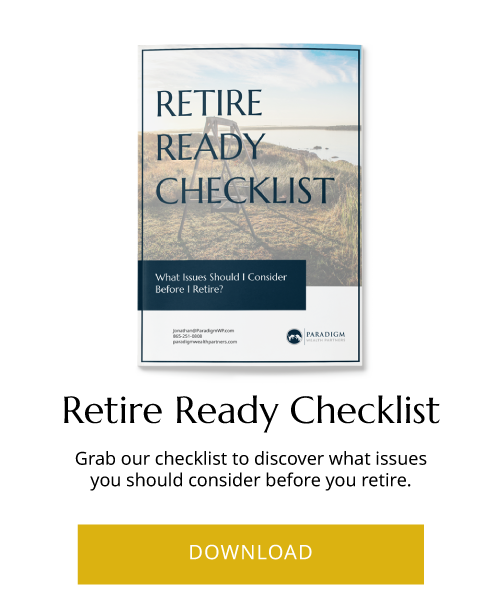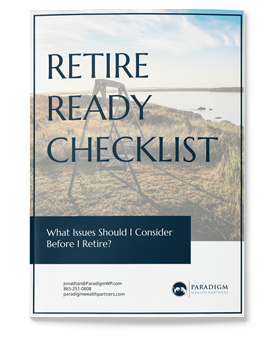Get a Handle on Your Student Loans
Your college years may be long behind you but your student loans may still be staring you in the face. In fact, when measured on a dollar basis, the biggest increase in student loan debt is among those age 30 to 39. That group has $461 billion in student loan debt. On a percentage basis, the amount of student loan debt in that age group has increased by 30.2% in the past five years.
When you’re struggling with student loan debt, it can be difficult to make progress on your financial goals like buying a home, starting a business, or saving for retirement. There is some talk of forgiving student loan debt but right now, that’s all it is; talk.
Instead of talking, let’s take action to get a handle on your student loans.
Student Loan Repayment Options
If you have federal student loans you’re having trouble repaying, there are several options to defer your payments or make your payments more manageable including Pay As You Earn Plans and Income Bases Repayment Plans.
If you’re not sure which will work best for your budget, you can use this calculator to see your payment amount under each program.
Student Loan Forgiveness Programs
Again, these programs are only available for federal loans and you must make consistent payments for a number of years before becoming eligible. Most of the programs are for those in public service or specific professions.
The sad fact is, nearly everyone who applies for these programs is rejected for one reason or another. If you are going to apply, make sure you have all of the required documentation, the correct forms, and all of the forms are filled out exactly as instructed.
Refinancing Student Loans
The interest rates on student loans are relatively low, especially when compared to something like credit card interest rates. But one way to save money on your student loan payments is to refinance your loans to a lower rate.
Both federal and private loans can be refinanced and there are companies like Earnest and Lendkey that specialize in student loan refinancing but there is a big caveat to refinancing federal student loans. Once a federal loan is refinanced, it is no longer eligible for any of the programs mentioned above. Some lenders have programs designed to help struggling borrowers but they are not as comprehensive as the federal programs. If you’re in a position where a lower interest rate isn’t enough to help the situation, I don’t recommend that you refinance. Speak to your student loan processor about one of the above programs instead.
Most student loan refinances can be handled entirely online. That includes shopping for the best rates and terms. Most sites just require some basic information in order to generate a preliminary offer. It usually only takes two or three minutes and it’s considered a soft credit pull which doesn’t impact your credit score so I encourage you to shop around online and find the best deal. Even a single point lower in interest can mean thousands of dollars saved over time.
Once you find and accept an offer you like, you’ll likely be asked to submit documentation confirming the amount of your outstanding loans, your income, and your identity. Most lenders will accept scanned copies that you can submit online. This process will trigger a hard credit check that will impact your credit score. The drop is small and temporary but there is a drop.
Once your application is accepted and processes, the lender will handle the pay off of your student loans, you don’t ever actually see the money. The whole process can typically be completed in several days or a week or two. Do not stop making payments to your current student loan processor until you receive confirmation that the loan has been paid off completely and closed. You’ll now make payments to the new lender.
Rinse and Repeat
You can refinance student loans as many times as you want. If your credit score goes up or your debt-to-income ratio improves, shop around again and see if you can get an even better deal than the one you have now.
This might not be worth the effort if you just have a few thousand dollars left on a loan but if you have medical or law school debt of five or six figures, this is one of the best debt management strategies you can employ.
Paying Extra on Student Loans
All debt is bad debt right? So you should pay off your student loans as quickly as possible, throwing every cent you can at them. Not necessarily.
The most important aspect of investing is time; the longer you have, the more your money will grow. If you spend even a few years paying off all of your student loan debt instead of investing, you’re leaving money on the table. Most student loan interest rates are lower than the return you can expect over time when you invest your money smartly.
Using all of your money to pay off a low-interest debt quickly and not investing during that time is not a wealth-building strategy. Especially if you neglect your tax-advantaged retirement accounts. Investing in the right retirement account can lower your taxable income as well as help you save for the future.
If the interest rates on your student loans are below 5%, you should be more focused on investing and just make the minimum monthly payments on your loans. If the rates are above 5%, you should seriously consider refinancing or at least spend a few minutes shopping around and seeing if you can find a rate good enough to tempt you.
If you just hate the thought of being in debt and want to be done with your student loans once and for all or are not eligible for any of the options I’ve discussed, be sure to pay them down strategically.
Use the debt stacking method if you have multiple loans. Focus on paying off the loan with the highest interest rate first while paying just the monthly minimum on the rest. Once the first loan is paid off, use the money you were paying on it and whatever extra money you have to pay off the next one while continuing to pay just the minimums on the others. Continue this way until all of the debts are paid off. By focusing on the highest interest debt first, you’ll save more on interest.
It Was Worth It
I know having student loan debt can be frustrating, especially when you’re in your 30s and 40s. But this should cheer you up. Someone with a college degree is 177 times more likely than a high school graduate to earn $4 million or more over their lifetime. And the typical college grad will make $900,000 more than the typical high school graduate.
So the student loan debt was worth it in the end.
Thanks for reading! If you are needing more help with your finances or want to read more about our financial opinions and advice– visit our blog here!
_______________________________
Please note this article contains hyperlinks to additional content. The information being provided is strictly as a courtesy. We make no representation as to the completeness or accuracy of information provided at these web sites.
Content in this material is for general information only and not intended to provide specific advice or recommendations for any individual.



